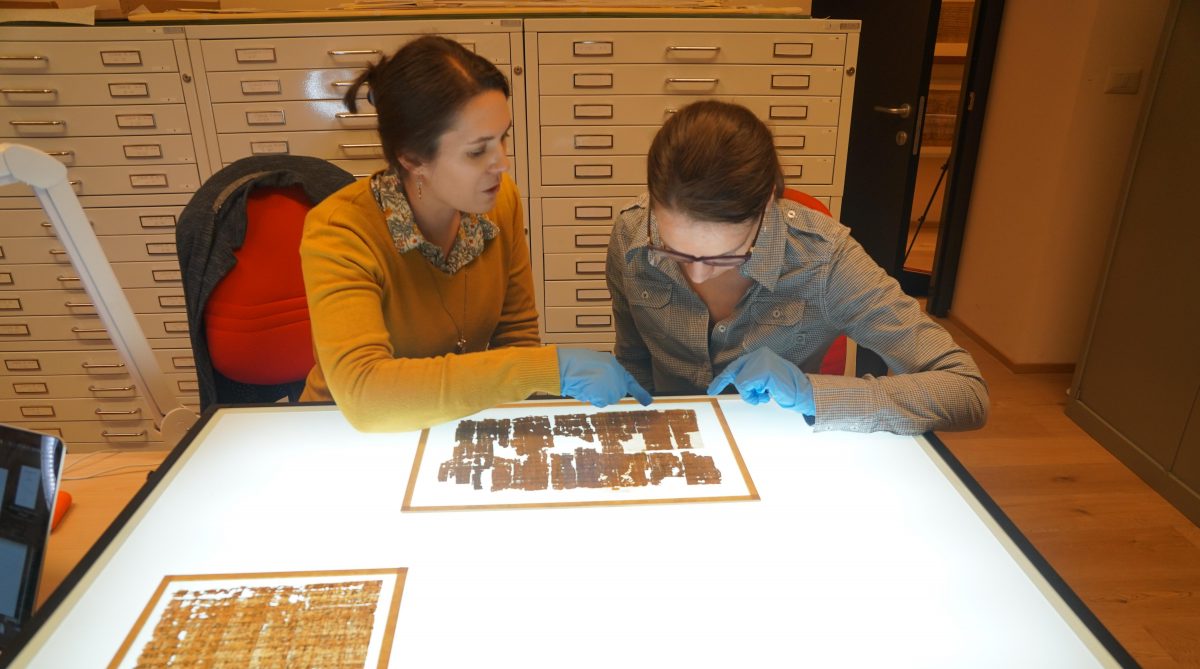The starting point of my study is the letters (and journals) found in the Ramesside period papyri in the Museo Egizio. These letters contain a wealth of prosopographical information about their sender(s) and receiver(s). Because they range from informal correspondence about daily business to (models or copies of) letters addressed to the authorities or the king, a great many scribal hands can also be distinguished in these papyri. As such, they allow us to plausibly identify many of the hands behind these letters, and to formulate sound hypotheses about the palaeographic repertoire of the scribes from Deir el-Medina. The results of my work on the letters will be checked against additional orthographic and grammatical criteria (cf. publications of Polis). I will also extend my method to other text categories: because we know that the same scribes produced other types of administrative and judicial texts, as well as composing and/or copying literary, magical and religious works, I will attempt to identify regularities (in ductus, layout and principal variation of hieratic forms) that can be used as ‘markers’ for certain scribes and deployed in order to track these scribes across texts and documents like the heterogenous papyri. The results (e.g. editions of the letter fragments in Turin) will be integrated in the ‘Turin Papyrus Online Platform. Within the framework of the ‘Crossing Boundaries’ Project, my epistolary focus thus shares many of the same goals as other ‘Crossing Boundaries’ sub-projects, such as the identification of scribal characteristics across genres, palaeographic analyses of particular scribes, and the archiving of documents. Because letters often form the subject of many sub-projects within ‘Crossing Boundaries,’ it will be possible to exchange results and test our findings in light of the different approaches that we will use and the new techniques that we will develop.
My investigation of the letter corpus also forms part of my ongoing project ‘Letters as a Means of Communication in the New Kingdom.’ Details of addressees and senders can provide information about the origin and destination of dispatches, as well delivery routes. Messages from Western Thebes in the Ramesside period are exceptionally well preserved, and this material can be compared with letters known from other places and from the New Kingdom in general. My project will thus discuss both new and previously known letter texts from an archaeological, chronological, philological, prosopographical, and topographical perspective. Questions about the purpose, logistics, and influence of written communications will be pursued using expanding geographical and administrative frames of reference beginning with Deir el-Medina and its regional connection, I will then examine these communications from a transregional perspective, and then in light of the New Kingdom and epistolary practice in general. Approaching the letters as exemplars of different cultural processes, my project will look not just at the content, language, grammar, and structure of these texts, but examine them from a social-historical perspective, taking into account their protagonists, role, messengers, and transport. I will also pay attention to the materiality and layout of the letters, as well as their possible reuse and find spot. The results of this study (such as the identification of the personal features of letter writers, and general tendencies within the letters) will provide relevant data for comparison and clues to the archaeological and functional context of the Turin Ramesside papyri.

